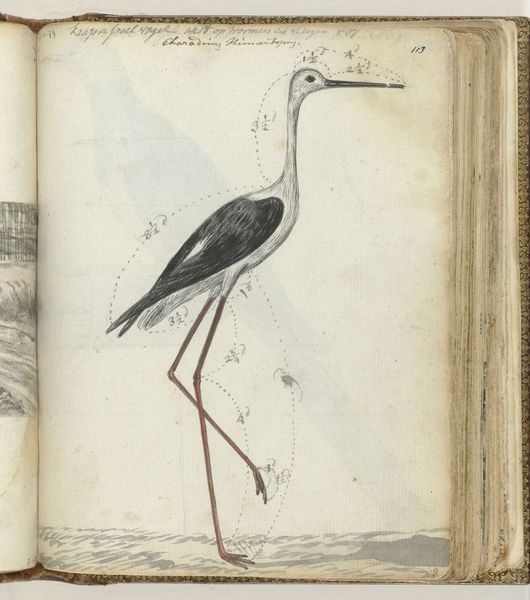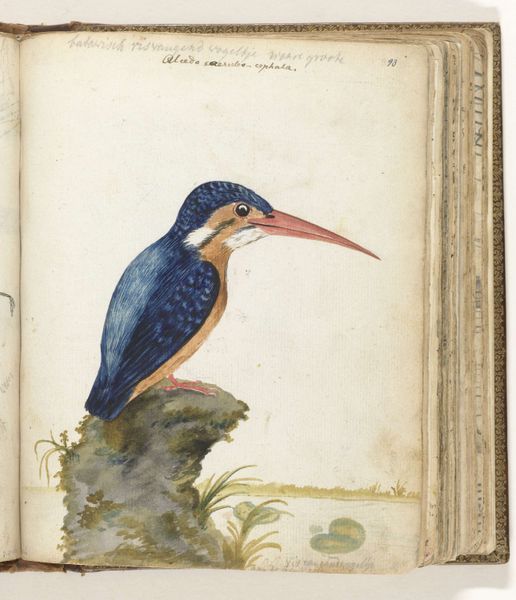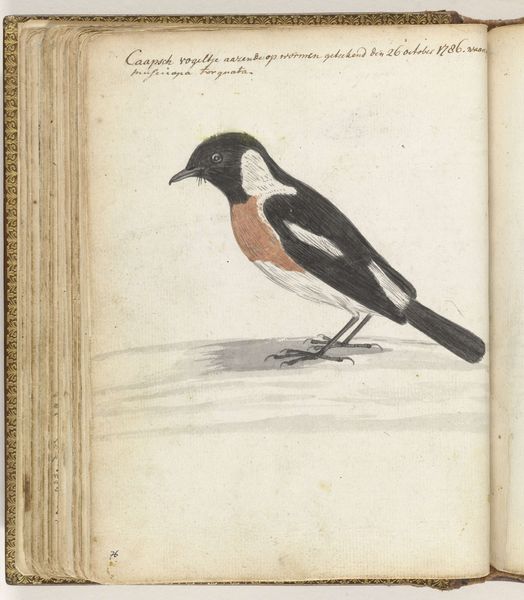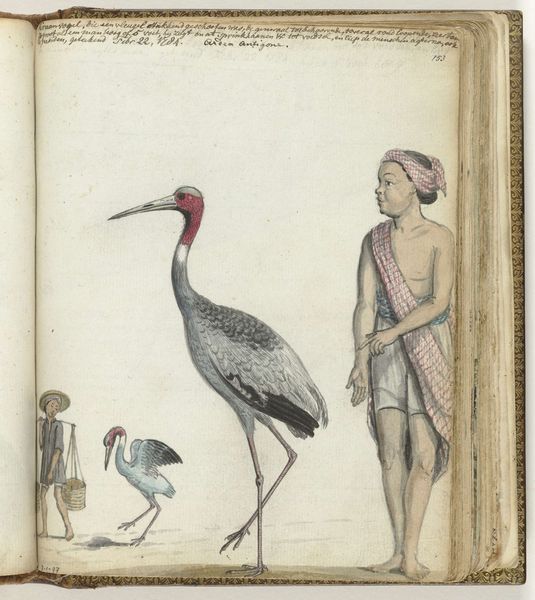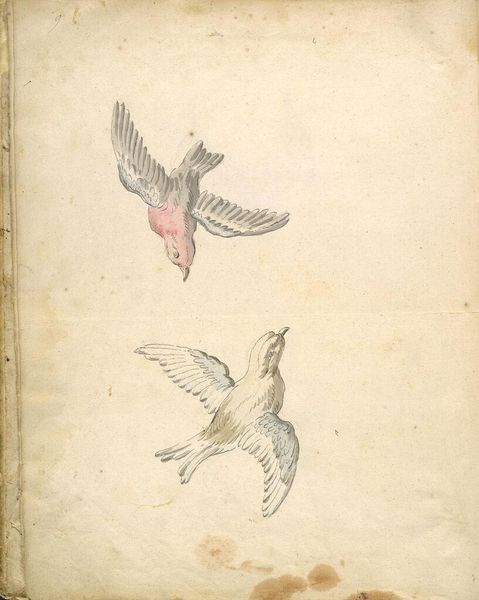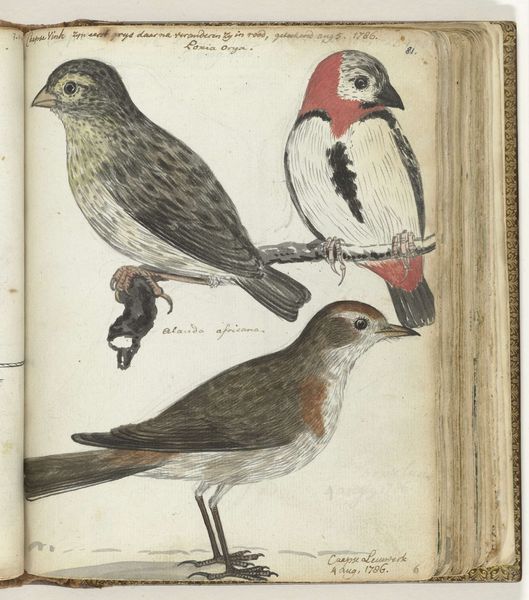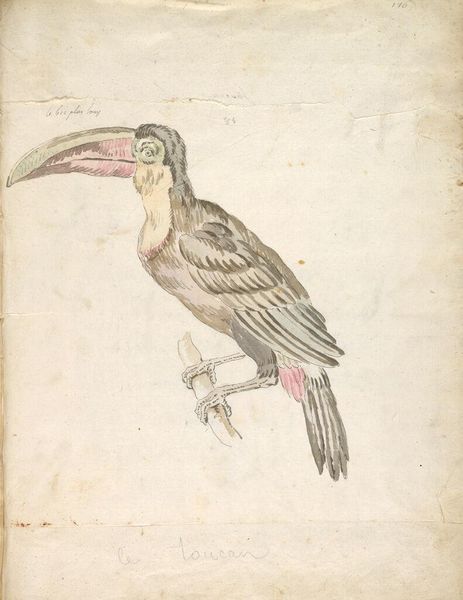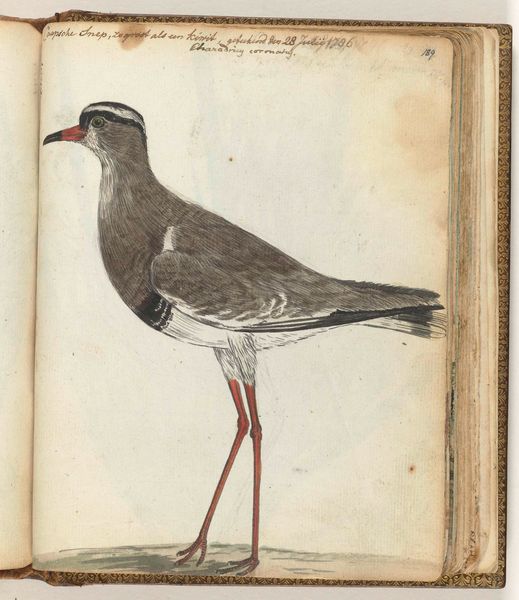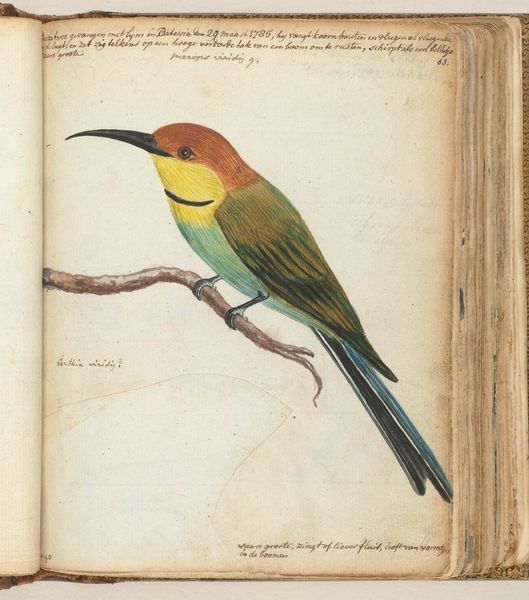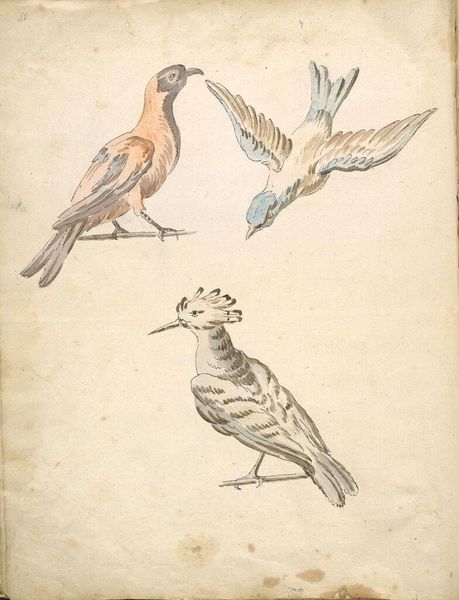
drawing, watercolor, pencil
#
drawing
#
aged paper
#
toned paper
#
landscape
#
bird
#
personal sketchbook
#
watercolor
#
pencil
#
sketchbook drawing
Dimensions: height 195 mm, width 155 mm
Copyright: Rijks Museum: Open Domain
Editor: This is "Javaanse vogels," or "Javanese Birds," a drawing from 1784 by Jan Brandes, made with pencil and watercolor. I find the simplicity charming, like a snapshot in a naturalist's journal. What stands out to you about this image? Curator: I’m immediately drawn to how the birds are rendered, not merely as specimens, but possessing a certain inherent character. Birds, across cultures, often symbolize freedom, the soul, or act as messengers between worlds. What feeling do these particular birds evoke in you? Editor: I see curiosity and gentleness in their poses, especially the way they seem to be looking at each other. Do you think Brandes intended to convey a specific meaning through their interaction? Curator: It’s possible. The choice to depict them together, rather than as isolated figures, suggests a relationship. In a broader context, the 18th century saw a surge in natural history illustration. How might these images, these 'scientific' representations, have shaped Europe’s understanding and, indeed, its colonial relationship with places like Java? Editor: That's fascinating. I hadn't considered the colonial implications of something as seemingly benign as a bird drawing. So, this isn't just art, but a cultural artifact with layers of meaning? Curator: Precisely! Each mark, each color choice becomes a carrier of cultural memory, revealing not just the natural world, but the mindset of the observer and the society they represent. Do you see echoes of that now, thinking about how we depict nature today? Editor: Definitely. It makes me think about the power we have, through images, to shape perspectives. Thanks, I learned a lot looking at it from a symbolic, cultural, and historical lens. Curator: And I’m reminded of the enduring human fascination with the natural world and the stories we weave around it.
Comments
No comments
Be the first to comment and join the conversation on the ultimate creative platform.
